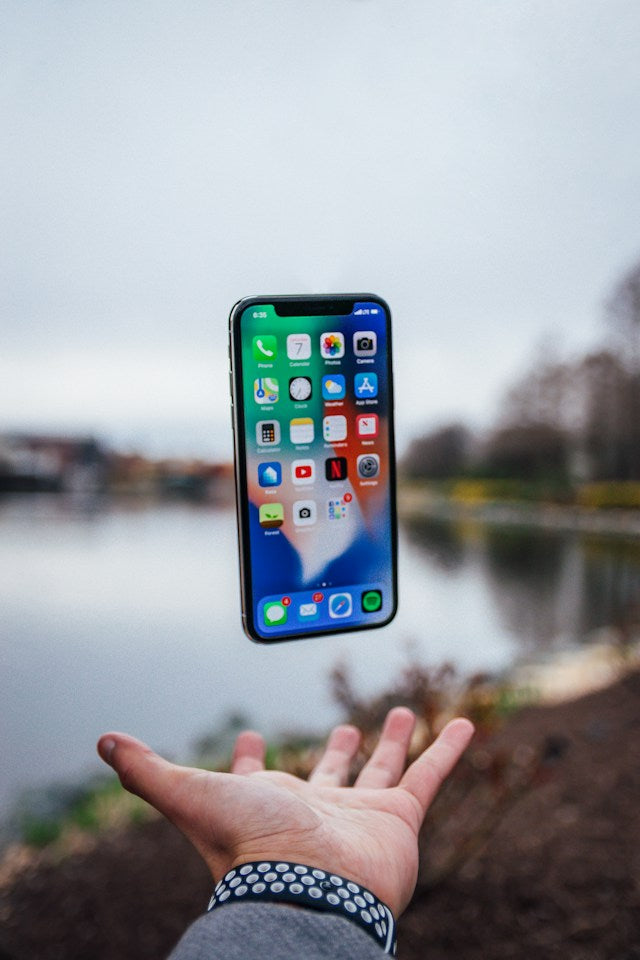
7 Smart Ways to Use iPhones in Education
Incorporating technology into educational settings need not be an intimidating or cumbersome endeavor. Actually, there's a wealth of innovative activities right at your fingertips – and by this, I'm referring to your smartphone, not just the iPhone. These devices harness immense potential to transform and enhance the learning experience.
How Can Phones Help Students in School?

#1 Automated Student Picker
Looking for an unbiased and efficient method to select a student? Skip the outdated paper draw method and discover the 'Pick a Student' app. Simply enter your class roster, store multiple lists, and with a mere tap, a student will be selected randomly. It's a fair and swift solution for any classroom situation.
#2 Note Taking
Every instructor needs to have a dependable note-taking application, like Evernote, at their disposal. It's incredibly useful for capturing spur-of-the-moment ideas that strike during a class or for quickly updating inventory needs, such as reminding yourself to restock red markers when they run out.
The question of cell phone use in class still comes up quite often. Unsurprisingly, technology does not always mean distraction from the work environment in the classroom. Using apps, you can go deeper into a lesson or expand your understanding of a topic.
Along with this, the question arises of the limited resources of the smartphone itself. Everything is simple here - you need to install the mobile cleaner app. You can find the best iPhone storage cleaner and quickly clear your memory of unnecessary data. To clean up iPhone, most students use the CleanUp app. This is a working solution that quickly cleans memory and frees up a lot of space. When you manage to free up 2-3 GB, and sometimes 10 GB.
#3 Scan QR Codes
QR codes provide a gateway to a wealth of digital content, from videos and audio files to websites and personal contact details. I've incorporated them into my lessons through an interactive German language scavenger hunt in the classroom. Most modern smartphones are equipped with built-in QR code scanners, though for any student who may have a device without this capability, numerous free apps are available to download.
#4 Focus Settings
iOS 15 introduces an upgraded take on the existing 'Do Not Disturb' with its new 'Focus' function, allowing for a more nuanced and personalized control over notifications. Unlike the all-or-nothing approach of 'Do Not Disturb', 'Focus' provides the flexibility to fine-tune which alerts you receive. This is particularly useful if you need to block out pesky app notifications while still staying open to important emails or specific messages, like those from a study group.
Setting up a 'Focus' mode is simple. Navigate to 'Settings', tap 'Focus', and then hit the '+' icon to create a new Focus. From there, you can pick an icon, name your Focus, and specify which contacts and apps are muted or permitted. Once you've tailored it to your liking, you can automate Focus modes with a set schedule or manual activation via the Control Center whenever it suits your situation.
#5 Voice Dictation

For the purpose of detailed note-taking, such as transcribing lectures, we advise against relying exclusively on the Voice Dictation feature available on iPhones. Despite its accessibility across various applications, including the Notes app, the technology lacks the precision required for comprehensive documentation, potentially leading to incomprehensible or erroneous transcriptions.
Nevertheless, the voice recognition capability proves to be invaluable for students who are frequently mobile and require a swift and efficient method to record their innovative ideas or essential reminders. The convenience of voice-to-text ensures that productivity remains uninterrupted, even while in transit.
#6 Access an Online Dictionary
Discovering the art of using digital dictionaries can transform a student's assignments from good to outstanding. I've seen firsthand the benefits of students quickly verifying the gender of nouns on platforms like PONS or LEO. Unsure about how to conjugate a verb? LEO is your go-to resource. Encountering unfamiliar expressions in readings or seeking the correct word usage in writing? Linguee provides clarity. If you’re looking to diversify your vocabulary and avoid repetition, Open Thesaurus offers a wealth of synonyms across multiple languages!
#7 Use the App to Brainstorm
In the latest update to iOS 16.2, Apple has introduced a new feature called Freeform. This application serves as an interactive digital whiteboard, offering a more expansive range of functions compared to social platforms like Pinterest. With Freeform, users are not constrained to just images; they can also incorporate handwritten notes, sketches, PDF documents, and other media into their collaborative space. Conveniently integrated with Messages and FaceTime, it provides a seamless collaborative environment for students and project teams to work together and engage in real-time discussions during a call.
Conclusion
Students can benefit from technology, so it is unwise to abandon it. Good teachers simply guide their students in the right direction. This way, they can understand the material faster and more deeply, as well as complete their homework. Why give up such advantages? The question is rhetorical.
Leave a comment
Comments will be approved before showing up.



